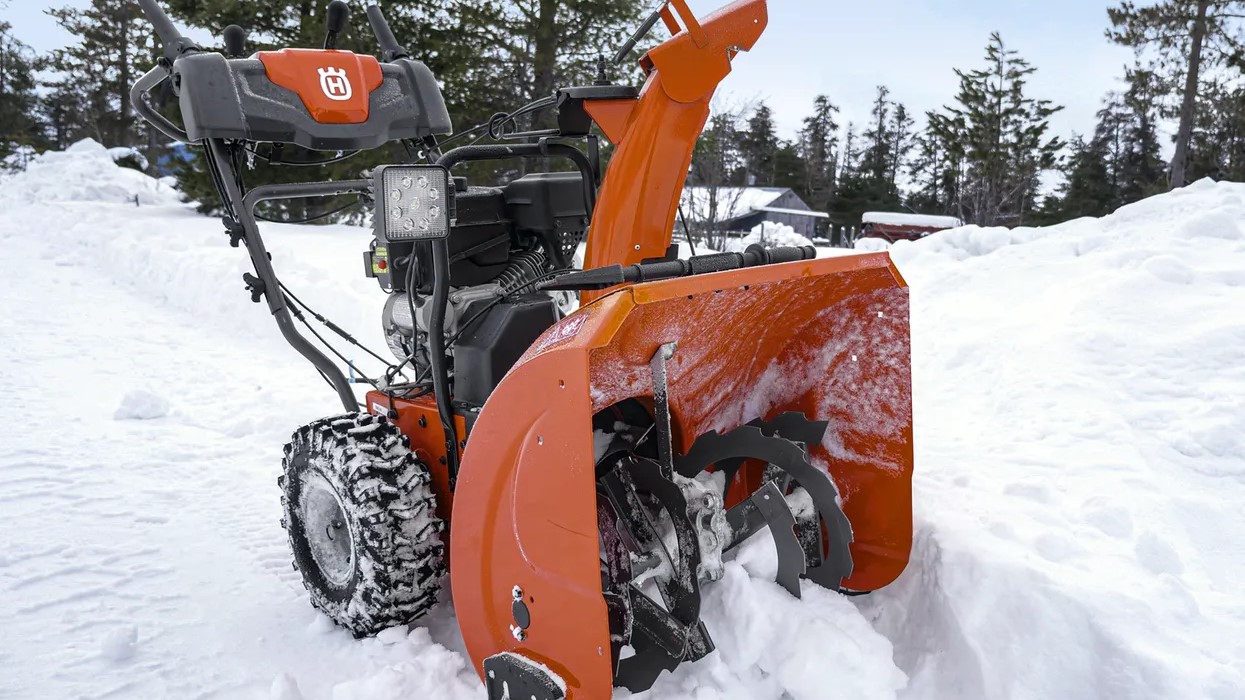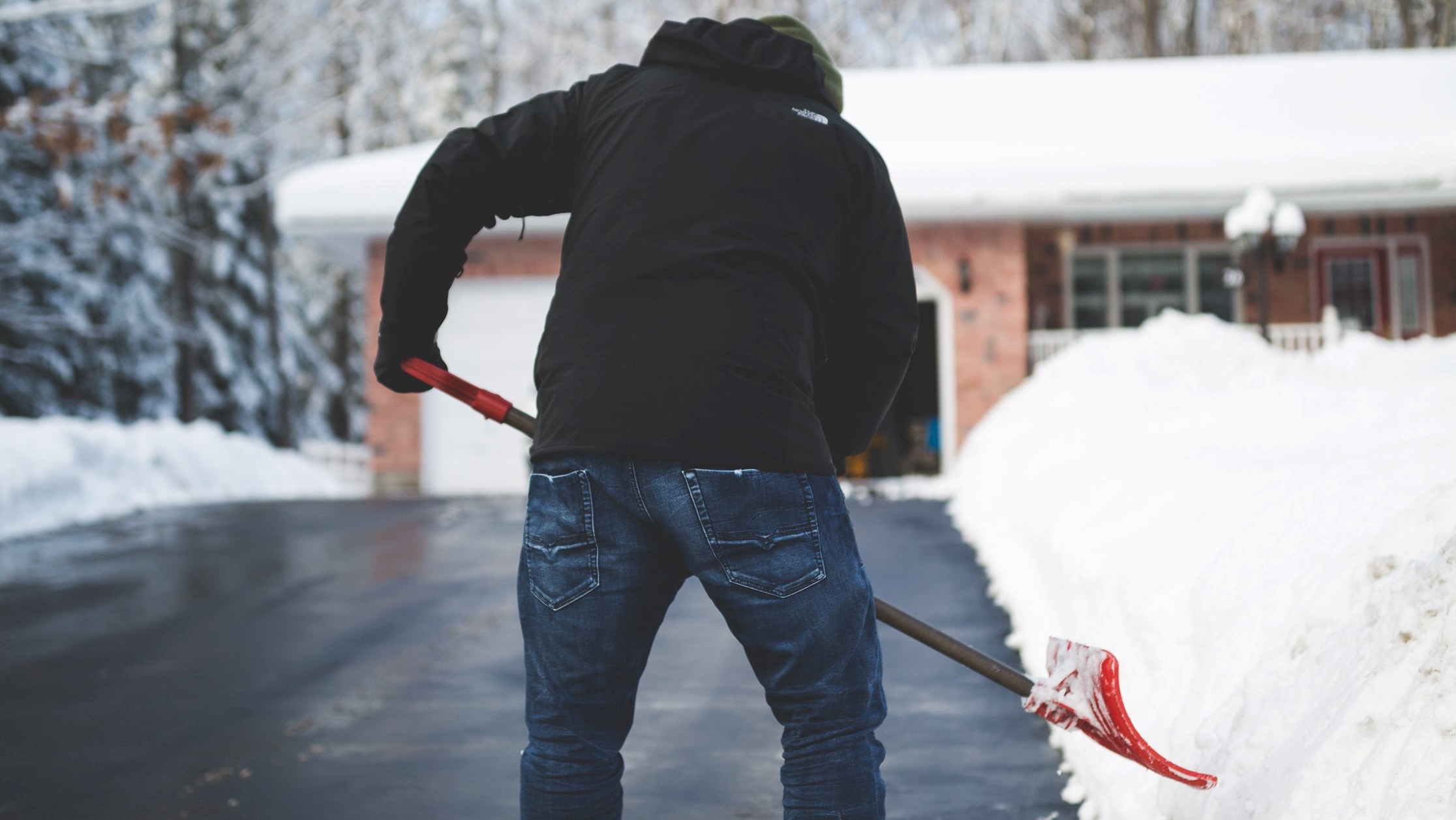How to use a snow blower: tackle any blizzard with our simple tips
Learning how to use a snow blower will save you hours in manual labor, and leave your driveway crystal clear

Nothing is more beautiful than a fresh snowfall – until you find yourself out in the cold clearing it away. With temperatures beginning to drop, now is the perfect time to explore snow removal options. Sure, you could grab a shovel, but we think a snow blower is the ultimate investment. Snow is heavy, and a machine is much better suited to move it than you. They're not only faster and more efficient, but much less strenuous on your back too, and that’s something we can get behind.
As winter approaches, there’s no better time to retire that old shovel and head to your local hardware store. With so many models to choose from, there’s an option to fit every home and outdoor space. The best snow blowers have a lifespan of 10 to 15 years – a worthwhile investment if you ask us!
Learning how to use a snow blower may sound self-explanatory, but it’s important to familiarize yourself with the process before you begin. Keep reading to get a grip on these handy gadgets.
How to use a snow blower in 6 simple steps
Once you get the hang of how to use a snow blower, long gone are the days of breaking your back with a shovel. If you follow our six simple steps below, you’ll be on your way in no time.
- Read your snow blower’s manual in its entirety. This is important not only for your safety, but for correct operation and to avoid any damage.
- Prepare to turn your snow blower on. If it’s a gas powered operator, make sure to use fresh fuel, and pump the choke at least three times to prime the engine. If your snow blower is electric, plug it in to the nearest outlet. If battery, make sure you have plenty of charge.
- Move your throttle to the highest setting. Nearly every model uses a universal rabbit symbol, making it easy to identify.
- If you’re using a gas snow blower, the fuel valve must be on. Now you can pull the starter, much like you would with the best lawn mower. Electric models will have an on/off switch.
- Slow and steady wins the race. As you make passes with your snow blower, keep a consistent pace. Walking too quickly can clog the machine.
- Adjust the chute to blow snow in the direction of the wind. On most newer models, you can aim the chute exactly where you want. Blowing snow in an upwind will erase all your hard work.

When is the best time to snow blow?
The most common question we receive about how to use a snow blower is, 'When is the best time to snowblow?'. After talking with the experts, we recommend beginning once snow has accumulated only a few inches. It puts less strain on your snow blower, and makes it easier to control where the snow goes. Much like a lawn mower, moving in an organized pattern is the most efficient – and neatest – way to move snow.
Barbara Roueche, Troy-Bilt Brand Manager advises further: 'Whether shovelling or blowing snow, keep in mind that the longer you allow snow to sit, the more difficult it will become to clear. It’s important to plan your snow throwing pattern to avoid discharging material toward roads, bystanders, and the like, because thrown objects can cause serious personal injury.
'And during the snow removal process, be sure to pay attention to where the excess snow is piling up. Make a conscious effort to keep snow from building up on the sides and foundation walls of your home, to help prevent water damage. Also try to keep the end of your driveway as clear as possible to reduce buildup when snow plows clear your street.'
The type of snow blower you have will also dictate how much snow you can clear (and therefore when to do it). There are three common types of snowblowers: single stage, two stage, and three stage. Single and two stage snow blowers are best suited for accumulation under 10 inches, while three stage snow shooters can tackle an impressive 16 inches of snow. The surface you’ll be clearing should also be taken into consideration, as well as the incline.
If the snow is not deep enough to warrant getting the snow blower out, there are smaller snow removal tools you can use such as brushes, and don't forget to grit your driveway for icy weather.

Top tips for quick and clear snow removal
- Snowblow length-wise
For best results with how to use a snow blower, move up and down your driveway, not across. Think of all those unnecessary turns you’ll avoid! - Replace gas regularly
The professionals at Home Depot advised replacing the gas at least every three months to keep your tool in tip top shape. Apparently old fuel can hurt the carburetor – an expensive part to replace. - Avoid high winds
We know the weather can be unpredictable, but if the forecast calls for calm winds, consider it go time. Flying snow and wind are a poor combination, and can eliminate all of your hard work. - Mark driveway edges before snowfall
How can you tell where to blow when everything is covered in a sheet of white? 'To help protect your yard and keep your snow blower on track, it's best to line the edges of your driveway and walkways with reflector stakes before the first major snowfall. The stakes will serve as guides to help safeguard nearby grass, plants and hedge roots,' suggests Barbara Roueche, from Troy-Bilt. You should also consider how to protect plants from winter so that snow blowing action is restricted to patios and drives. You can't use a snow blower to clear your vegetable patches or flower beds. - Which type of snow blower?
We highly recommend opting for a gas powered snow blower, as they’re more powerful and almost always perform better with heavy snow. You also then don't have to worry about power outlets and reach. However, there are some really good battery options now that match the power of gas and mean you aren't restricted by cables.
Safety tips for using a snow blower
Finding out how to use a snow blower might not be rocket science, but it can be dangerous if done incorrectly. Don’t forget to read the manual and follow the advice below before tackling this winter job in the garden.
- Opt for fitted clothing as the last thing anyone wants is their snowblower sucking up their shirt rather than the snow.
- Wear goggles or glasses. You never know when debris will come flying, and it’s important to protect your eyes.
- Prepare your walkways and garden paths. If a big storm is anticipated, take the time to move all debris. Newspapers and rocks can cause jams in your snowblower, which can require costly repairs.
- Keep your hands away from the chute. Never use your hands to unclog the machine.
- Don’t refill gas in a hot unit. Wait until the snowblower has cooled down to avoid splattering gas.
- Don't use a single stage blower on gravel. This will throw the gravel everywhere. You need a two or three stage blower for gravel driveways as they separate the hard matter before throwing the lighter snow away.
Midwestern freelancer Courtney Irwin is a working mom of three who loves nothing more than a good deal. She has spent years curating home renovation content, and is excited to join the Gardeningetc Reviewers team and try out all of the latest and greatest outdoor tools and gadgets.
